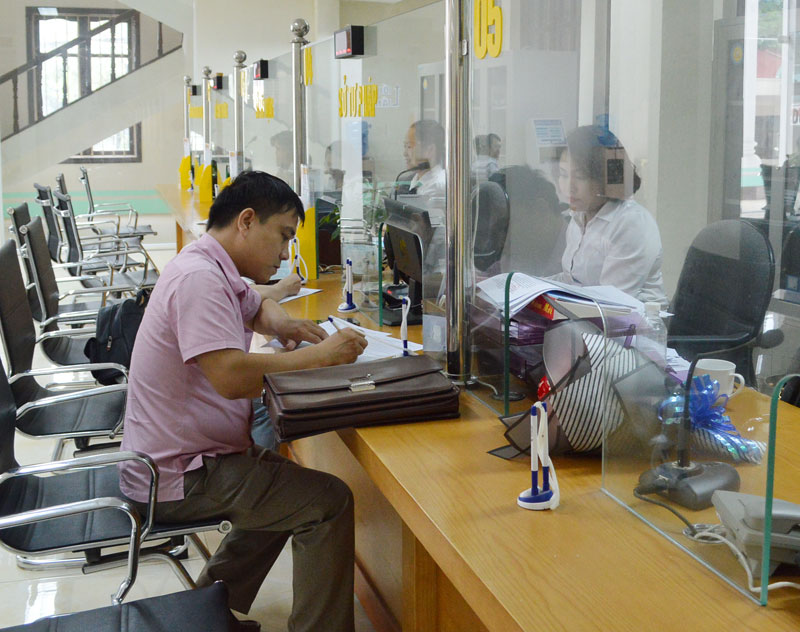
(HBO) - In early months of 2019, the monitoring of administrative procedures in Hoa Binh was carried out synchronously, with the provincial People's Committee issuing plans and documents guiding the implementation of administrative violation control in the province.
In the first quarter of 2019, the
committee’s relevant agencies advised the Chairman to issue 22 decisions
announcing the list of the 349 administrative procedures under the jurisdiction
of the three levels of local authorities. Notably, a new regulation amended and
supplemented 78 procedures, while removing 150 others.
Based on these decisions, local departments,
agencies, district- and commune-level People's Committees have fully posted the
content of each administrative procedure on their official portals and made
public the receipt of administrative documents and return of results at public
administration centers at provincial, district and commune levels. The office
of the provincial People's Committee has updated its data on administrative
procedures and publicise the information on the national database.
 People engage in
administrative procedures in the construction field at the provincial
administrative service center.
People engage in
administrative procedures in the construction field at the provincial
administrative service center.
Implementing the single-window
mechanism in settling administrative procedures, the People's Committee issued
Decision No. 3010/QD-UBND on the announcement of the 1,980 administrative
procedures to be accepted and not at provincial administrative service centers,
as well as district- and commune-level divisions offering administrative services.
Local authorities and
competent agencies are focusing on promoting the processing of files requested
for administrative approvals. In the first quarter, the entire province
received 108,120 files, of which 105,163 were processed and of this, 105,121
were processed on time. The number of files processed via public postal
services amounted to 928, mainly in the fields of transportation, justice, planning
and investment, and industry and trade, among others./.
The Department of Education and Training of Hoa Binh province held a conference on March 18 to review the performance of the "Safe and Happy School" Project and set out tasks for 2025. The project, funded by the Taiwan Fund for Children and Families (TFCF), aims to create a safe, inclusive, and supportive learning environment for students. The event saw the attendance of representatives from the TFCF and 26 beneficiary schools.
With over 70% of their workers being women, trade unions across industrial parks (IPs) in Hoa Binh have been actively safeguarding their legal rights and interests while implementing initiatives to improve their income and well-being.
In recent years, the Hoa Binh provincial General Hospital has continuously innovated itself and improved the quality of medical services to meet the increasing needs of local people. With substantial investments in infrastructure and modern equipment, along with a team of highly qualified doctors and nurses, the hospital has gradually established itself as one of the leading medical units in the Northwestern region and a trusted destination for healthcare for people inside and outside the province.
From mastering the fundamentals of programming to achieving national recognition, the Programming Club of the Le Van Tam Primary School (STAR LVT28) in Hoa Binh city has made remarkable strides in the field of robotics.
The Ho Chi Minh Communist Youth Union Committee and the Vietnam Youth Federation chapter of Hoa Binh province organised a programme on March 12 to launch the "Digital Literacy" movement and an online quiz on the resolutions of the Vietnam Youth Federation congresses at all levels, as well as the Politburo's Resolution No. 57-NQ/TW on breakthroughs in the development of science, technology, innovation, and national digital transformation.
As climate change grows more unpredictable, the development of production forests has become essential - not just for economic growth, but for safeguarding the environment and maintaining ecosystem balance. By boosting local incomes, curbing natural disasters, preventing soil erosion, and protecting water resources, these forests play a crucial role in sustainable development.



 People engage in
administrative procedures in the construction field at the provincial
administrative service center.
People engage in
administrative procedures in the construction field at the provincial
administrative service center.